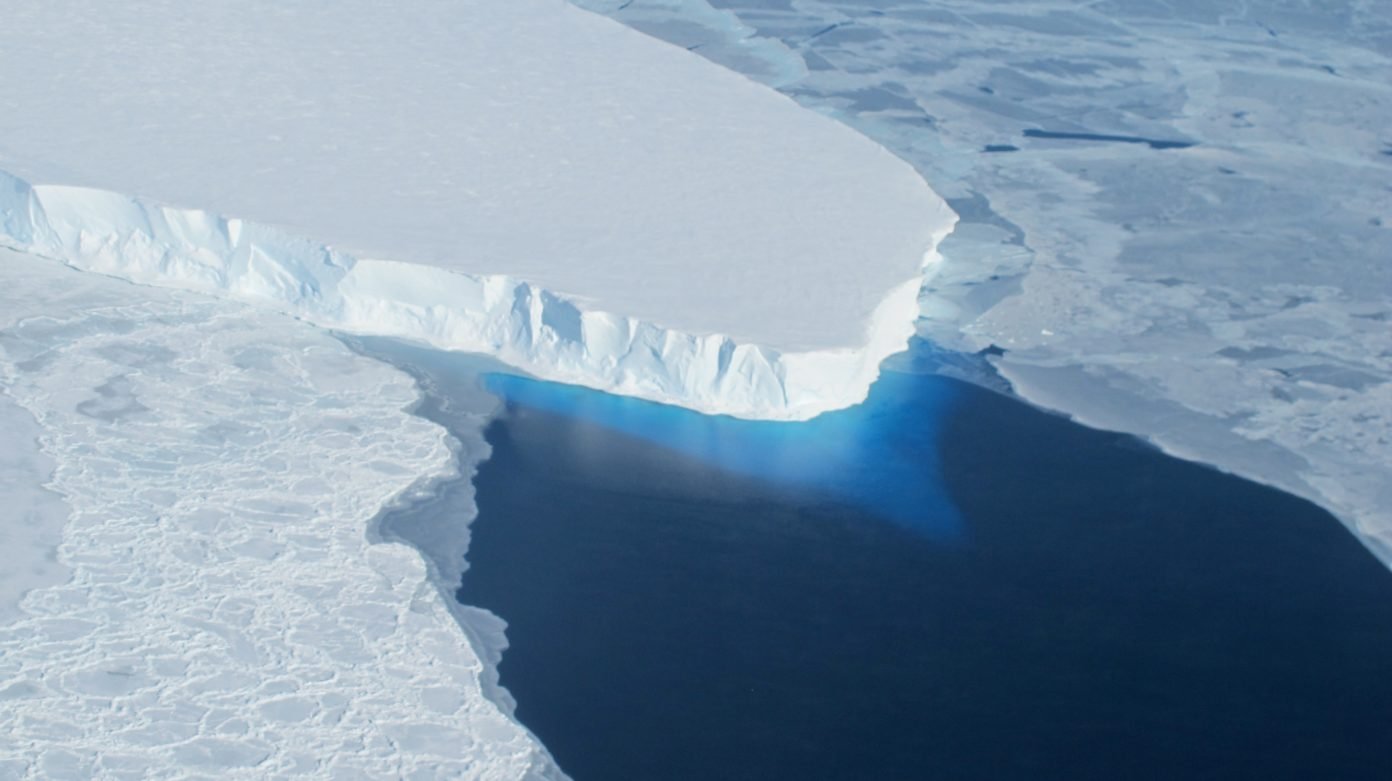From the Greek Reporter website.

Antarctica’s Thwaites Glacier, referred to now as the “Doomsday” glacier, may melt in three years, causing sea levels to rise dramatically.
Experts warned at a press briefing on December 13 that the large glacier — which is roughly the size of Florida — could trigger a major glacial collapse across the whole of the Antarctic, thus dubbing it the “Doomsday glacier.”
Thwaites is the widest glacier on the planet, measuring roughly 80 miles across and 2,600 to 3,900 feet deep. The glacier is currently experiencing the most dramatic upheaval of any ice and ocean system on the planet. According to The International Thwaites Glacier Collaboration (ITGC),it is estimated that the ice mass has lost 900 billion metric tons of ice since the start of the 21st century, and that it now loses roughly 50 billion tons of ice per year.
If Thwaites were to completely fall apart and thaw and have its ice convert back into water in the ocean, the world’s sea levels would rise by over two feet, said ITGC lead coordinator Ted Scambos, one of the presenters at the meeting of the American Geophysical Union (AGU) where the press briefing on the glacier was held last week.
“And it could lead to even more sea-level rise, up to 10 feet (3 m), if it draws the surrounding glaciers with it,” Scambos said in a statement, referring to the ripple effect the glacier would have on surrounding ice systems.
Because Thwaites plays such a significant role in of Antarctica’s climate, and its transformation has dire effects on the entirety of the planet’s ecosystem, over 100 scientists in the United States and the United Kingdom have been working together on eight research projects that monitor the entirety of the ice system. The initial results from these projects where presented at the AGU.
“We’re about at the midpoint of The International Thwaites Glacier Collaboration,” Scambos said to the press. “We’ve got a few more years to go to assemble further results and integrate them, so we have a better understanding of this glacier moving forward.”
Lizzy Clyne, an adjunct professor at Oregon’s Lewis and Clark College who spoke at the meeting, said that tidal activity was exposing the glacier to more warm water, accelerating its melt off: “When you have low tide, the floating ice shelf portion sinks down,” Clyne said at the AGU.
“This acts kind of like a lever, and can actually pull up a section a little bit inland that can pull water in. And then the opposite happens when you have high tide and the water level rises — the floating section rises up,” Clyne explained. This vertical motion, which is called tidal pumping, can create a negative feedback loop by channeling more warm water to the glacier through passages already created by its melting.



The long-term impacts of the Thwaites Glacier collapse is definitely a major issue, but this article is misleading in saying “Thwaites Glacier … may melt in three years, causing sea levels to rise dramatically”. The links in the article to the work of the International Thwaites Glacier Collaboration and the University of Colorado Collaboration on Thwaites do not support this statement at all. What could happen is that the tongue that is protruding into the sea and floating on it could break off in the short term. This will not contribute itself to sea level rise (try seeing if the ice melting in your G&T increases the water level), but is likely to lead to an increase in erosion of that part of the glacier that is on land and will increase the rate of movement of the glacier into the sea, both of which contribute 4% to the current total sea level rise of 3.5mm per year, as one of the links says. Of course, it will be more than 4% after the collapse, but even then the complete melting of the glacier will take a very long time. As the TWG article says (WAIS is the West Antactica Ice Sheet, of the the Thwaites is a part):
“If the WAIS collapsed and melted in its entirety, global sea levels would rise by 3.3 metres; however, this process would require centuries to millennia.”
The more immediate threats to humanity from global heating are extreme weather causing mass crop failure and death due to torrential rain, flooding, hurricanes and tornadoes and heatwaves and quite possibly wars as a result of all this. Both immediate and long-term threats may possibly be averted by concerted action on emissions and re-forestation.
It is important to be accurate about these things, as there are plenty of deniers around ready to pounce on mistakes by climate change activists.
I want to emphasise the point I made in the comment above about the collapse of the tongue of the Thwaites glacier being serious. My point is that the effects will not be felt immediately, unlike many of the other consequences of global heating. That said, they may be irreversible, unless significant global cooling takes place over the next few hundred years.